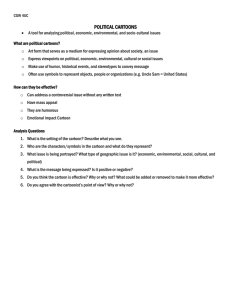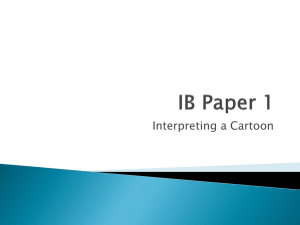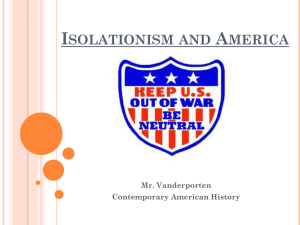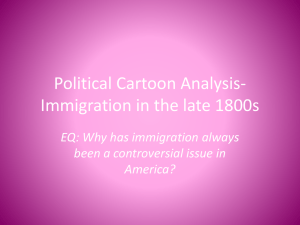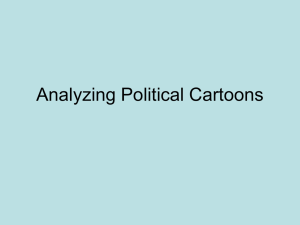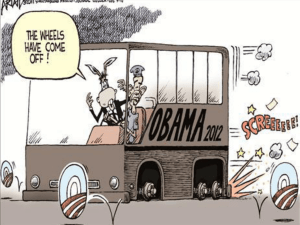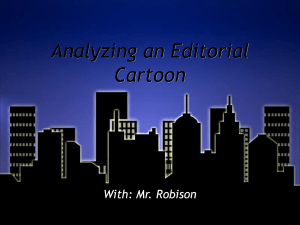Describing and Analysing cartoons - schule.bbs
advertisement
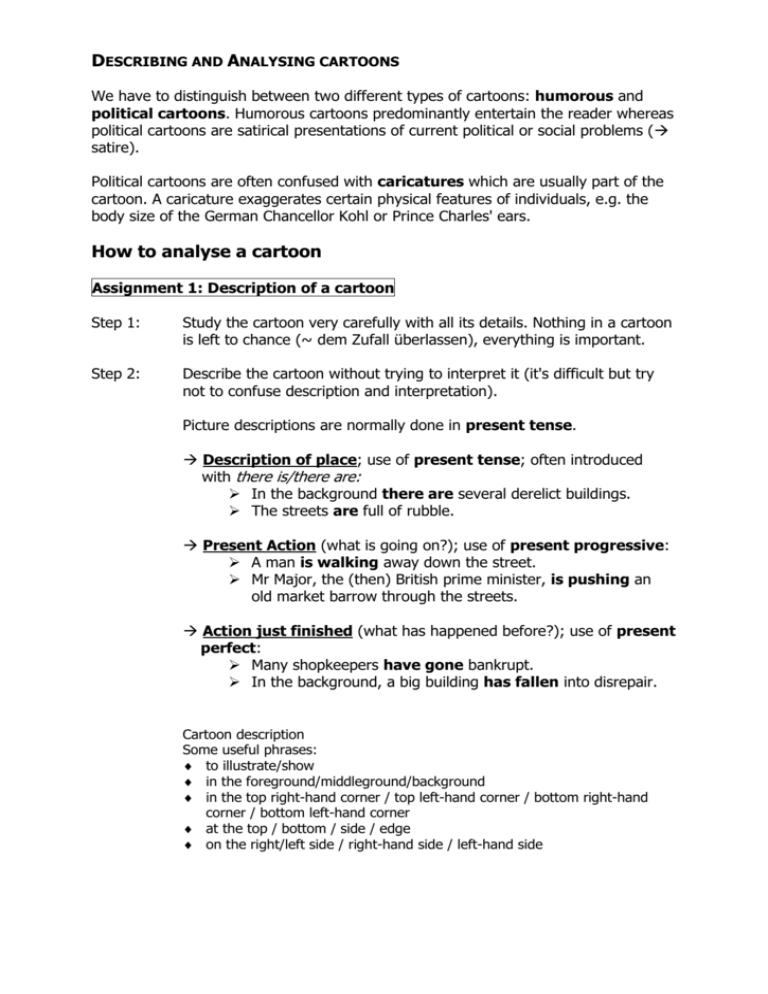
DESCRIBING AND ANALYSING CARTOONS We have to distinguish between two different types of cartoons: humorous and political cartoons. Humorous cartoons predominantly entertain the reader whereas political cartoons are satirical presentations of current political or social problems ( satire). Political cartoons are often confused with caricatures which are usually part of the cartoon. A caricature exaggerates certain physical features of individuals, e.g. the body size of the German Chancellor Kohl or Prince Charles' ears. How to analyse a cartoon Assignment 1: Description of a cartoon Step 1: Study the cartoon very carefully with all its details. Nothing in a cartoon is left to chance (~ dem Zufall überlassen), everything is important. Step 2: Describe the cartoon without trying to interpret it (it's difficult but try not to confuse description and interpretation). Picture descriptions are normally done in present tense. Description of place; use of present tense; often introduced with there is/there are: In the background there are several derelict buildings. The streets are full of rubble. Present Action (what is going on?); use of present progressive: A man is walking away down the street. Mr Major, the (then) British prime minister, is pushing an old market barrow through the streets. Action just finished (what has happened before?); use of present perfect: Many shopkeepers have gone bankrupt. In the background, a big building has fallen into disrepair. Cartoon description Some useful phrases: to illustrate/show in the foreground/middleground/background in the top right-hand corner / top left-hand corner / bottom right-hand corner / bottom left-hand corner at the top / bottom / side / edge on the right/left side / right-hand side / left-hand side Assignment 2: Interpretation of a cartoon Usually the cartoonist directs the reader's attention to a certain aspect in his cartoon. The aim is usually achieved by applying a certain "shock effect", often presented as a paradoxical situation (something that contains a contradiction in itself). One often encounters the so-called black humour here, introduced by British cartoonist. Step 1: Study the characters portrayed in a cartoon very carefully, their features, clothing, body language and posture (~ Körperhaltung). How do your observations fit in with the rest or the issue the cartoon is dealing with? Some useful phrases: to be the only/sole character in the cartoon to represent sb./sth. to look/appear to be carefree (~ sorgenfrei)/content (~ zufrieden)/unhappy/lonesome to wear a/an ... to look like a/an ... to be reinforced (~verstärkt)/reflected by a facial expression (~ Gesichtsausdruck/-züge) to appear/look ... Step 2: Now try to work out what the cartoonist's message is. What does he want to convey to the reader? What aspects does he highlight? The message of a cartoon Some useful phrases: to compare ... with ... to concentrate on a particular/specific aspect of sth. to not pay any attention to sth. to imply/infer/suggest sth. to expect a positive side-effect (~ Nebeneffekt) from sth. to hope that sth. good will come from/out of sth. to be a widespread (~ weit verbreitet) idea among some scientists... Step 3: Finally the cartoonist's position/point of view/attitude has to be interpreted. The result, of course, is a subjective assessment. But normally one can assume that ... 1. the cartoonist wants to shed light on some underestimated or unusual aspect of the situation or 2. he wants to ridicule the current or generally accepted political or social attitude. Study the cartoon and decide which of the above mentioned intentions are being realized. Interpreting a cartoon Useful phrases: to attempt/try to give/unusual insights into a situation to explain the true significance (~wahre Bedeutung) of sth. to poke fun at / ridicule a fashionable/trendy idea/opinion to accuse sb. of

